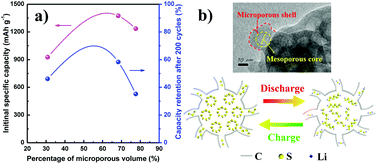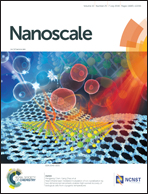Insight into the positive effect of porous hierarchy in S/C cathodes on the electrochemical performance of Li–S batteries
Abstract
Hierarchically porous carbon-supported sulfur material is widely used as a cathode for Li–S batteries because its large surface area and rich porous system provide high sulfur loading, resulting in high specific capacity with stable charge/discharge cycling performance. However, limited attention has been paid to whether the structure of hierarchical porous system affects the final electrochemical performance of Li–S/C batteries. Herein, we present hierarchically structured carbon (WSAC) with varied amounts of mesopores and micropores as a sulfur container for Li–S batteries. It is found that the relationship between electrochemical performance and percentage of microporous volume obeys a volcano distribution, which indicates that the volume percentage of microporous in the meso-microporous structure could be suitably tuned to achieve the desired electrochemical performance. Such S/hierarchically meso-microporous carbon (i.e., WSAC-8) with moderate microporous volume percentage (68.3%) shows high initial specific capacity (1375 mA h g−1) and stable charge/discharge performance (942.6 mA h g−1 after 200 cycles at 0.5C). In particular, WSAC-8 also presented superior capacity behavior at high rate capability, with final capacity as high as 800.1 and 758.7 mA h g−1 for 1C and 2C, respectively.



 Please wait while we load your content...
Please wait while we load your content...